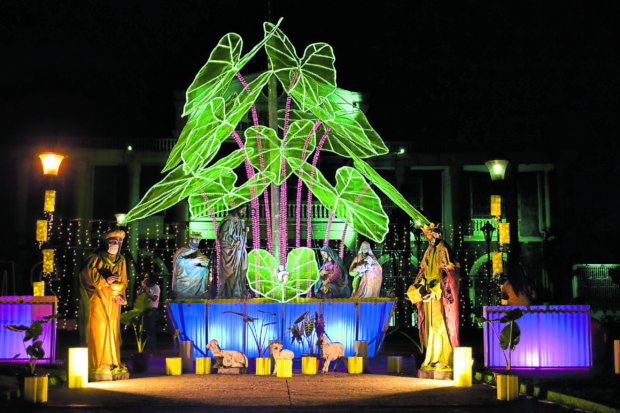Tarlac’s Belenismo a respite from pandemic, disasters
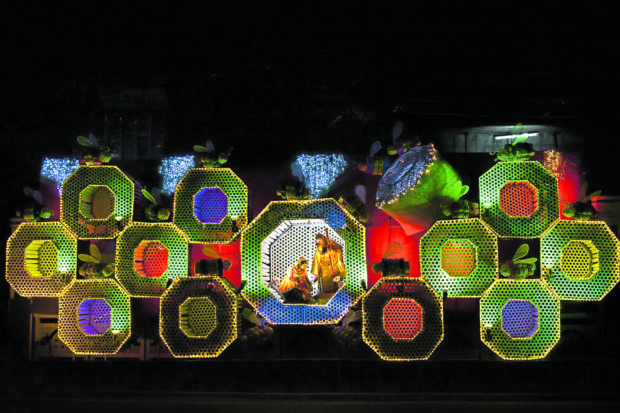
BEEHIVE A honeycomb-inspired “belen” of San Roque Parish church features 12 holes to represent the 12 disciples and the months of the year. —PHOTOS BY MARIA ADELAIDA CALAYAG
TARLAC CITY, Tarlac, Philippines — At a time when Filipinos are desperately looking for a respite from the seemingly never-ending tragedies this year, the annual display of colorful nativity dioramas in Tarlac province is offering hope and breathing space.
This year’s 13th Belenismo showcases 41 nativity scenes created for the “belen”-making competition that has become one of the most anticipated events in Tarlac during the Christmas season.
“Belenismo is a festival that can go on despite the quarantine rules. We just restricted the number of people who will gather together to view the dioramas. Everyone is welcome, but health protocols must be observed” said Dr. Isa Cojuangco Suntay, cofounder of Tarlac Heritage Foundation, which is among the organizers of the event.
Suntay said a simple opening was held on Nov. 6 to avoid large crowds.
The nativity dioramas are competing in the community, church, monumental, grand municipal and grand nonmunicipal categories.
A rainbow-themed belen of the Philippine Army in front of Camp Servillano Aquino in Barangay San Miguel, Tarlac City, stands out with its bright glows.
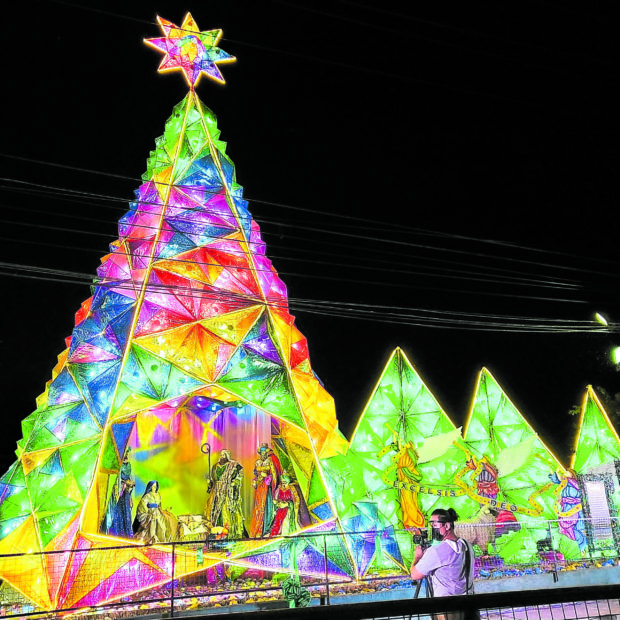
HOLIDAY GLOW A“belen” of the PhilippineArmy in front of Camp ServillanoAquino in Barangay SanMiguel, Tarlac City, stands out for its rainbow theme and bright holiday colors.
‘Symbol of hope’
“[Our belen] symbolizes hope amid the pandemic as it reminds people to strengthen their faith in God,” said Maj. Gen. Robert Dauz, commander of Armor Pambato Division 1 (formerly Mechanized Infantry Division).
Some parts of the belen were made in the camp to follow health protocols. But these had to be dismantled ahead of Typhoon “Rolly” (international name: Goni), which crossed Central Luzon in the last week of October.
In San Clemente town, the local government drew inspiration from the famed lighthouse of Batanes to create a 42-foot tall belen out of bamboo, “boho,” “anahaw” and banana stalks.
Alfredo Modomo Jr., municipal tourism officer, said old blankets and cement were also used for the flowerpots and artificial flowers that adorn the belen, called “Light and Life.”
“A lighthouse provides direction to boats and ships. The light it beams offers hope to weary sailors searching for a safe place. This is the message we want to convey through our belen,” Modomo told the Inquirer.
San Clemente’s entry was adjudged winner last year in the grand municipal category, making it a candidate for the Hall of Fame award.
Moncada town’s entry, which is made of roof coverings and metal sheets, features photographs of front-line workers as a way of paying tribute to their heroism in this time of pandemic.
An image of an angel with wings spread out and hovering above the Holy Family is made of spray painted metal sheets.
For the entry of Tarlac 1 Electric Cooperative Inc. (Tarelco I) in Gerona town, the Holy Family is covered and protected by a large heron made of rubber mats.
Instead of the Three Wise Men and farm animals, the belen is flanked by images of 10 front-line workers, mostly nurses, doctors, policemen, soldiers, linemen and teachers.
Tarelco’s entry provides a glimpse of the natural calamities that struck the country this year. It is surrounded by photographs that captured the impact of the Taal Volcano eruption, the typhoons and the coronavirus pandemic.
The entry of Capas town went local this time after bringing the foreign Christmas vibe (Dutch windmill and Eiffel tower in Paris) to their belen in the past years.
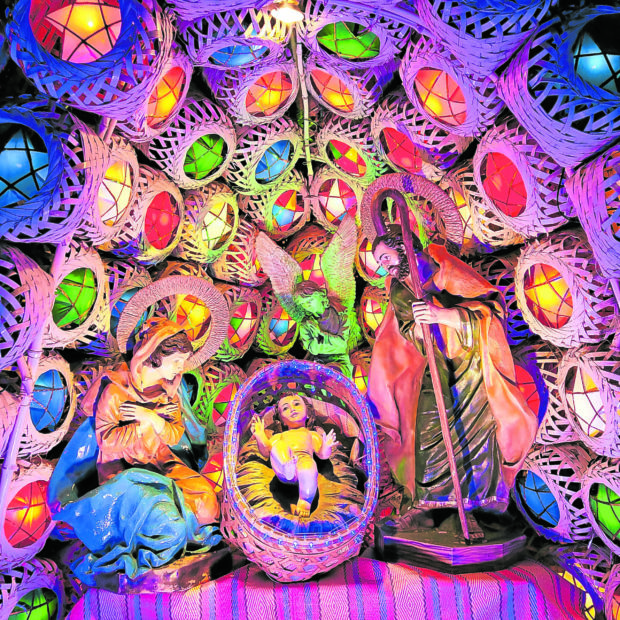
INSPIRED BY FAITH San Lorenzo parish’s “belen” features baskets with lanterns. It is displayed near the church’s front door to encourage people to return and worship despite the health crisis.
Joy of gardening
For this edition, the belen showcases the joy of gardening by getting inspiration from plant hobbyists who have become increasingly popular during the pandemic.
A three-time champion, Capas presented a new diorama sitting on a large pot where a giant caladium plant-like decor is adorned with lights while the Holy Infant Jesus is laid on a bright green leaf.
Jessie Dizon, a local artist, said it took him only a week to finish the design of the diorama, which was not competing in this edition after being a Hall of Fame awardee in 2019.
Youngest designer
Joseph Anton Cruz, 17, is the youngest belen designer this year. He created a 14-foot tall “Flame Belen” in front of their house at Fairlane Subdivision in Tarlac City.
The fire-inspired belen is made of 565 bamboo slits, and has 11 statues and 11 rays and balls made of Styropor and broomsticks.
Cruz’s belen is competing in the community category, after placing third in the last two years.
“Do more while you’re young and express yourself through art,” Cruz said as he encouraged the youth of Tarlac to get involved in the festival.
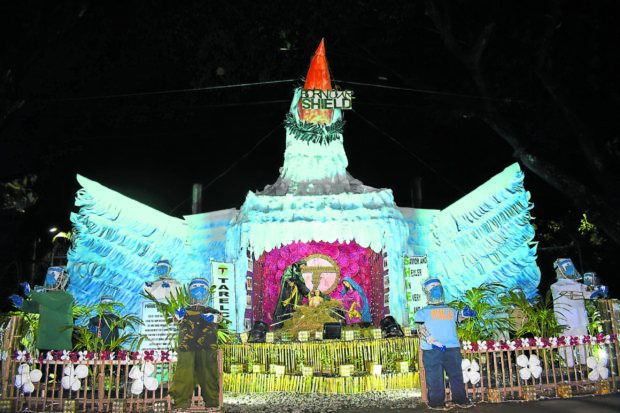
PROTECTOR The entry of Tarlac 1 Electric Cooperative Inc. in Gerona town is notable for its giant heron, made of rubber mats, that appears to protect the Holy Family.
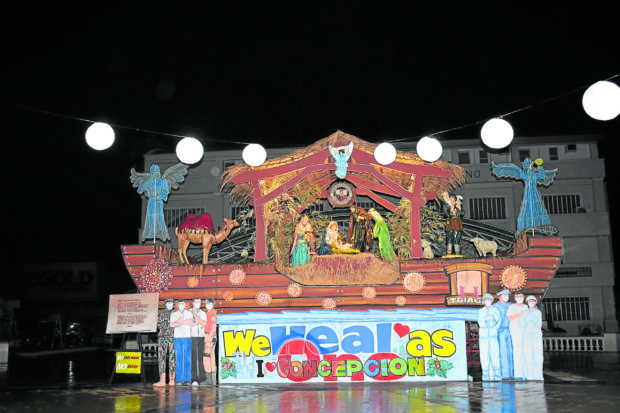
SYMBOLIC The “belen” of Concepcion town showcases a large boat that represents the Catholic Church. It is surrounded by standees of pandemic front-liners.
Churches’ entries
The parishes of San Lorenzo Ruiz and San Roque in Tarlac City also joined the contest, not just to compete but also to celebrate the unity of Filipino families and inspire the Catholic faithful.
San Lorenzo’s belen, which is made of hen baskets, is placed near the church’s front door as a way to encourage people to go back to the church. Each basket contains a lantern that illuminates the belen and also symbolizes the front-liners.
A honeycomb-inspired belen of the San Roque Parish church features 12 holes to represent the 12 disciples and the months of the year.
It also displays 17 bees made of baskets to represent the 17 Tarlac towns. The wings of the bees are made of old mosquito nets. The beehive is above the Holy Family.
Although no single theme ran through this year’s Belenismo, organizers said most of the entries paid homage to the sacrifice of front-liners.
The Belenismo was started in 2007 by the late Fr. Alex Bautista, a licensed architect of the Diocese of Tarlac, with the help of Tarlac Convention and Visitors Bureau, the provincial government and Tarlac Heritage Foundation.
